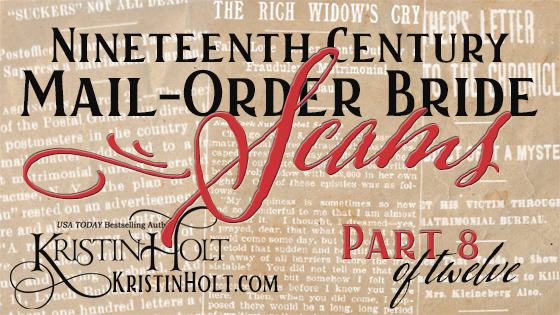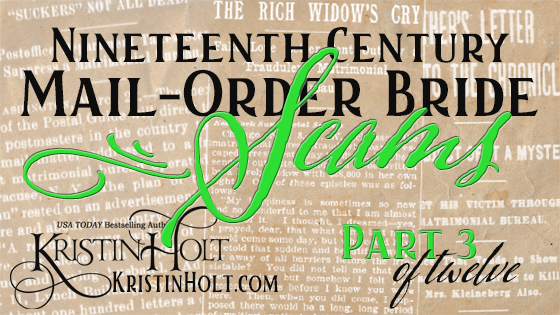
by Kristin Holt | Dec 1, 2016 | Articles
Flirting, during the American Victorian era, was often deemed in poor taste (and a sign of low-breeding). Men and women in large cities found a way around the censure–they flirted in the personals column of newspapers. Examples illustrate the personals used requesting an introduction (or interview), private and secretive communications, and to find a lady to begin a courtship. Mother (and/or chaperones) may not have approved…but what she doesn’t know won’t hurt her.

by Kristin Holt | Jun 20, 2016 | Articles
4 STARS for the 1879 title, Wired Love: A Romance of Dots and Dashes. As an amateur historian determined to learn what I could about the telegraph and its impact on American society, how it worked, and the challenges telegraphers faced, this sweet (innocent) love story fit the bill!

by Kristin Holt | Apr 6, 2016 | Articles
The more I study historic details of America’s past, the more I realize I don’t know–such as the common practice of suing for breach of contract when a young swain’s courtship derails and no marriage results. I was fascinated by newspaper accounts of settlements upon jilted brides, the dollar amounts sued for, common beliefs of the time period about courtship in general. Who knew courtship in nineteenth century America was such a legal risk?

by Kristin Holt | Mar 6, 2016 | Articles
A murderer finds his victims through a matrimonial bureau; and two wealthy (and married) women entrap unsuspecting swains into expensive courtships, engagements, marriage– or close enough– broken hearts and shattered illusions.

by Kristin Holt | Feb 17, 2016 | Articles
A man with two wives (neither knows about the other) seeks yet two more, entirely to swindle them of their means. This 1899 tale is so well worth reading.
Franks, as he presents himself on the West Coast, in the middle of defrauding women through multiple marriage agencies is scammed, himself, by a wealthy widow in demand of a expensive courtship.
Amateur historians will find myriad details worth noting, such as the communication of chiefs of police, use of the term “dead beat,” laws on the books, and so much more.













